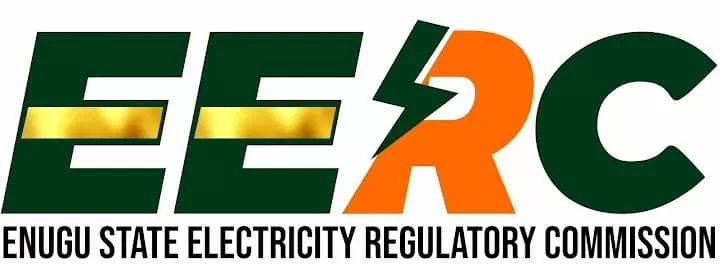
WHY ENUGU REGULATOR IS A SPARK OF LIGHT IN NIGERIA’S DARKNESS
At a time when electricity tariffs across Nigeria are testing the limits of household and business survival, the southeastern state of Enugu has done what few thought possible: cut prices.
In early July, Enugu slashed the tariff for its highest-band power consumers by nearly 23 percent, a decision that is reverberating through Nigeria’s power sector.
Band customers in Enugu now pay ₦160 per kilowatt-hour (kWh), down from the ₦208/kWh average set at the federal level.
The price cut, driven by the state’s independent regulator, the Enugu State Electricity Regulatory Commission (EERC), was not just symbolic. It followed a detailed audit of operational costs and tariff assumptions by MainPower, the local electricity distribution company.
In a country where electricity costs have steadily risen without a matching improvement in supply, the implications are far-reaching.
Residents of Lagos, Abuja, and Kaduna continue to pay between ₦210 and ₦230/kWh, often for erratic supply. In contrast, Enugu’s consumers are now seeing lower bills and asking why other regions cannot deliver the same relief.
The development is a direct result of the Electricity Act 2023, which devolved regulatory powers to states.
While the law gives states authority, few have acted. Enugu is now among the first to fully exercise that mandate and do so publicly.
According to officials, the EERC rejected an initial proposal from MainPower to retain federal rates and demanded detailed cost submissions, including transformer stock audits, staff counts, and grid maintenance outlays.
The ₦160/kWh rate that emerged was not arbitrary but based on real figures and cost-efficiency targets.
Importantly, the process revealed major distortions in the previous system. Some high-income households on Band A feeders had been benefiting from lifeline subsidies as low as ₦4/kWh, while true low-income users were left to cope with higher tariffs. Enugu’s new structure corrects this without penalising the most vulnerable.
“What is clear is that the reform has exposed the fragility of Nigeria’s existing electricity pricing system.”
The federal tariff model, by contrast, has not seen a comprehensive cost review since 2014. A scheduled 2019 update stalled. A 2024 revision has yet to materialise. In that vacuum, Enugu’s reform has laid bare what many in the sector have long suspected: that federal pricing assumptions are out of sync with ground realities.
Recent estimates from Enugu’s regulatory filings suggest that actual power generation costs could average as low as ₦45/kWh over the next five years. That is less than half the ₦112/kWh baseline used by federal authorities. If accurate, it implies end-users across Nigeria are absorbing unnecessary markups of over 150 percent.
With federal power subsidies now topping ₦3 trillion and the 2025 national budget allocating ₦900 billion for electricity support yet to be disbursed, the sustainability of the central model is under pressure.
The effect of Enugu’s actions is already spreading. At least seven states—Ondo, Ekiti, Oyo, Edo, Kogi, Benue, and Delta—have begun formal steps to establish independent electricity regulation. Lagos, Ogun, Niger, and Plateau are reportedly preparing similar moves by September.
Experts say that if these states follow Enugu’s model of cost audits and transparent pricing, the impact on households and businesses could be transformative. For a small tailoring business in Ibadan or a welding shop in Kano, replicating Enugu’s pricing structure could free up ₦20,000 to ₦30,000 in monthly resources that could be reinvested into growth or hiring.
Factory owners say power now makes up over a third of operating costs. Any relief, they argue, would improve competitiveness and reduce layoffs.
Not everyone is convinced. Some energy stakeholders warn that Enugu’s pricing could prove politically expedient but financially risky. If MainPower fails to meet service obligations under the lower tariff, critics say, service quality could suffer.
However, Enugu’s officials insist that their structure is not subsidy-driven. Rather, it is built on verified data, with mechanisms to revise rates if market dynamics shift.
What is clear is that the reform has exposed the fragility of Nigeria’s existing electricity pricing system. More than a decade after privatisation, the national grid still loses nearly ₦40 of every ₦100 generated through theft, poor metering, and technical losses. Tariff hikes have masked these problems but not solved them.
President Bola Tinubu himself has reportedly opted for off-grid power solutions at his official residence, an ironic reflection of how the grid’s failings reach the very top of government.
Enugu’s move doesn’t solve Nigeria’s power crisis. But it may be the most serious attempt yet to confront it at the state level. By insisting on data-backed tariffs and forcing accountability, Enugu has shown that affordability and sustainability can coexist.
In a country where electricity darkness is both literal and institutional, the southeastern state has offered a rare glimmer of clarity and perhaps a blueprint for reform.
 Premium News
Premium News